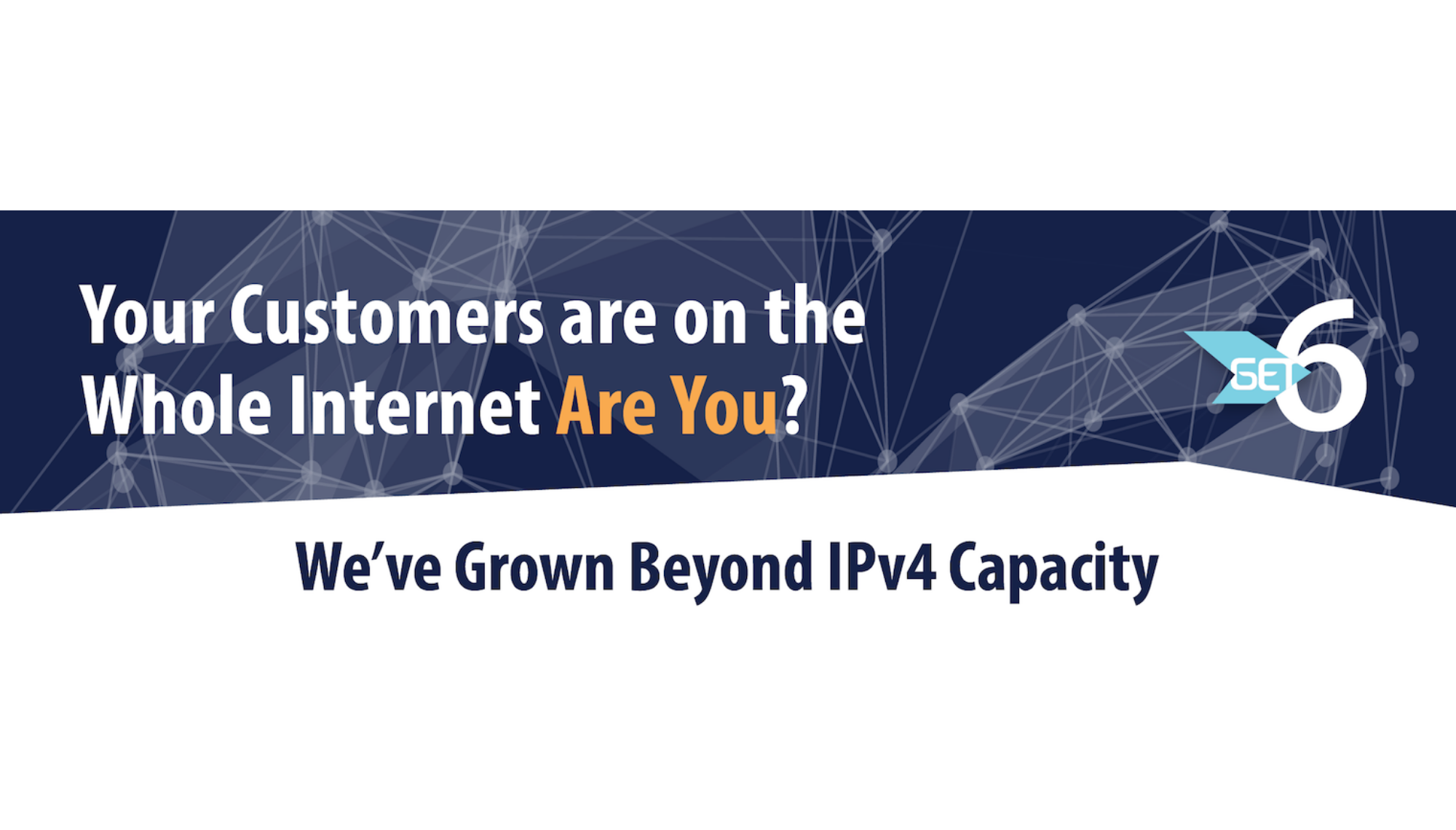
Growing the Internet with IPv6 [Archived]
OUT OF DATE?
Here in the Vault, information is published in its final form and then not changed or updated. As a result, some content, specifically links to other pages and other references, may be out-of-date or no longer available.
It’s 2016, and imagining a world without Internet is pretty much impossible for most of us. Along the way to “how did we ever exist without this,” the Internet has grown in ways we could have never anticipated. It’s grown in terms of users, connected devices, and even how we connect to the Internet: via Internet Protocol version 4 (IPv4) or the more expansive Internet Protocol version 6 (IPv6).
The Internet now reaches into the everyday aspects of our lives beyond just sitting down at a computer. We now have “the Internet of Things (IoT),” which is the network of physical, tangible objects that have the ability to connect to the Internet to collect and exchange information. This means your coffee pot, wristwatch, or even the lights in your house can become a part of one large, interconnected network. But the transformative effects of the IoT will never be felt as long as device manufacturers, web content developers, and consumer technology interests still rely solely on IPv4.
Lucky for us, some industry leaders are paving the way for across-the-board IPv6 adoption. Check out the infographic below to see how the Internet has grown and how several major companies are leading us into a brighter IPv6-enabled future.
OUT OF DATE?
Here in the Vault, information is published in its final form and then not changed or updated. As a result, some content, specifically links to other pages and other references, may be out-of-date or no longer available.

